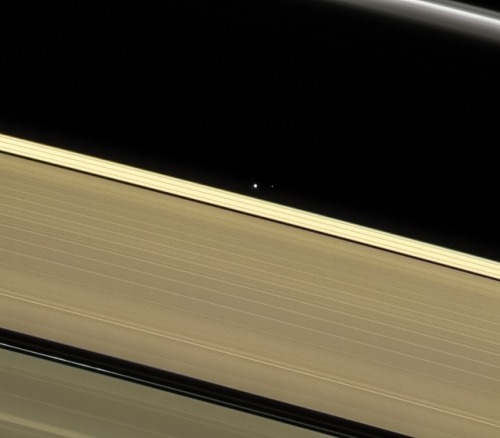Steve Gildea Planetary Suite, Circa 1990









Steve Gildea Planetary Suite, circa 1990
More Posts from Starry-shores and Others
How quickly do we grow accustomed to wonders. I am reminded of the Isaac Asimov story "Nightfall," about the planet where the stars were visible only once in a thousand years. So awesome was the sight that it drove men mad. We who can see the stars every night glance up casually at the cosmos and then quickly down again, searching for a Dairy Queen. (x)
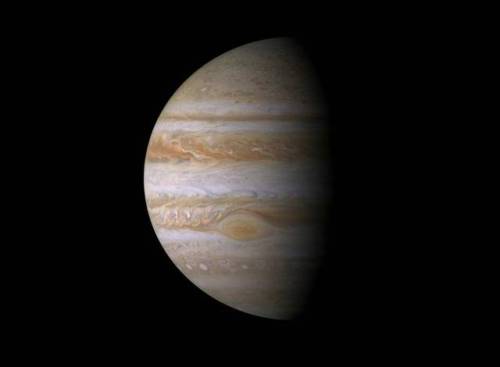
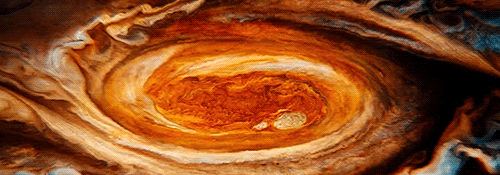
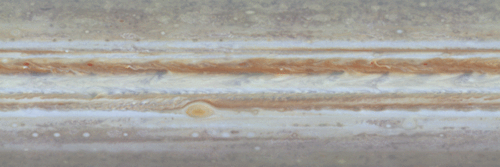
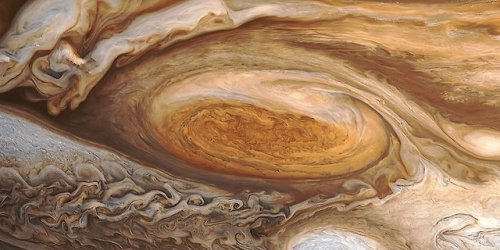
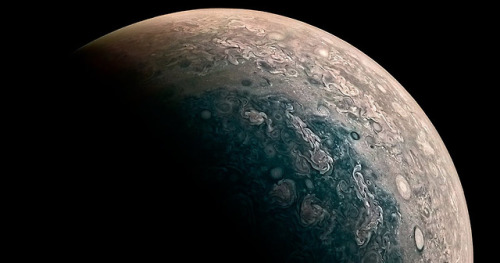
Jupiter is perpetually covered with clouds composed of ammonia crystals and possibly ammonium hydrosulfide. The clouds are located in the tropopause and are arranged into bands of different latitudes, known as tropical regions. These are sub-divided into lighter-hued zones and darker belts. The interactions of these conflicting circulation patterns cause storms and turbulence. Wind speeds of 100 m/s (360 km/h) are common in zonal jets. The zones have been observed to vary in width, color and intensity from year to year, but they have remained sufficiently stable for scientists to give them identifying designations.
The cloud layer is only about 50 km (31 mi) deep, and consists of at least two decks of clouds: a thick lower deck and a thin clearer region. There may also be a thin layer of water clouds underlying the ammonia layer. Supporting the idea of water clouds are the flashes of lightning detected in the atmosphere of Jupiter. These electrical discharges can be up to a thousand times as powerful as lightning on Earth. The water clouds are assumed to generate thunderstorms in the same way as terrestrial thunderstorms, driven by the heat rising from the interior.
source
I found a really cool Youtube channel called History of the Earth that covers topics in the incredibly distant past. I'm talking billions of years ago. And learning how the Earth itself formed and where water came from and about the very first single-celled organisms is just like... woah. WOAH.
It's wild that billions of years ago there were just some bacteria hanging out in the ocean and now we have all this. It's really humbling and puts into perspective how precious our planet is. How precious life is.

The Himalayan plateau, as seen from the ISS by europeanspaceagency
Crow, landing by me like one of those kinetic bombardment tungsten rods: I am ancient. I am all-seeing. I sat on the shoulders of gods, made friends with the wolf and picked clean the eyes of your brothers. I am the ever-shifting trickster and the croak at the back of Death's throat. I am darkness a-wing and night in the day.
Me: Baby! Your lunch is there, go mad.
Crow: ...
Me: ...
Crow: Ooh, raisins!
-
 stellarflow reblogged this · 3 weeks ago
stellarflow reblogged this · 3 weeks ago -
 stellarflow liked this · 3 weeks ago
stellarflow liked this · 3 weeks ago -
 pa-nos reblogged this · 3 weeks ago
pa-nos reblogged this · 3 weeks ago -
 pa-nos liked this · 3 weeks ago
pa-nos liked this · 3 weeks ago -
 asoeateeputroephon liked this · 3 weeks ago
asoeateeputroephon liked this · 3 weeks ago -
 disastriquotidiani liked this · 3 weeks ago
disastriquotidiani liked this · 3 weeks ago -
 disastriquotidiani reblogged this · 3 weeks ago
disastriquotidiani reblogged this · 3 weeks ago -
 kristohd liked this · 3 weeks ago
kristohd liked this · 3 weeks ago -
 den-8a-se-afhsw-na-fygeis reblogged this · 3 weeks ago
den-8a-se-afhsw-na-fygeis reblogged this · 3 weeks ago -
 zigreth reblogged this · 3 weeks ago
zigreth reblogged this · 3 weeks ago -
 ndonttcare liked this · 3 weeks ago
ndonttcare liked this · 3 weeks ago -
 4sl4nz reblogged this · 3 weeks ago
4sl4nz reblogged this · 3 weeks ago -
 mousikop4rmenh liked this · 3 weeks ago
mousikop4rmenh liked this · 3 weeks ago -
 colourful-dreamer reblogged this · 3 weeks ago
colourful-dreamer reblogged this · 3 weeks ago -
 fobije reblogged this · 3 weeks ago
fobije reblogged this · 3 weeks ago -
 cold--as-ice liked this · 3 weeks ago
cold--as-ice liked this · 3 weeks ago -
 hannahthefan reblogged this · 3 weeks ago
hannahthefan reblogged this · 3 weeks ago -
 badtundra reblogged this · 3 weeks ago
badtundra reblogged this · 3 weeks ago -
 thxslittlethxngofours reblogged this · 3 weeks ago
thxslittlethxngofours reblogged this · 3 weeks ago -
 psyhorizon reblogged this · 3 weeks ago
psyhorizon reblogged this · 3 weeks ago -
 chrispaplos reblogged this · 3 weeks ago
chrispaplos reblogged this · 3 weeks ago -
 qu4lc0s41ncu1cr3d3r3 reblogged this · 3 weeks ago
qu4lc0s41ncu1cr3d3r3 reblogged this · 3 weeks ago -
 s-pa-s-meno-s liked this · 3 weeks ago
s-pa-s-meno-s liked this · 3 weeks ago -
 saka1am reblogged this · 3 weeks ago
saka1am reblogged this · 3 weeks ago -
 melaxrinos liked this · 3 weeks ago
melaxrinos liked this · 3 weeks ago -
 zefiko reblogged this · 3 weeks ago
zefiko reblogged this · 3 weeks ago -
 zefiko liked this · 3 weeks ago
zefiko liked this · 3 weeks ago -
 magissa-me-psychologika liked this · 3 weeks ago
magissa-me-psychologika liked this · 3 weeks ago -
 kortizolh reblogged this · 3 weeks ago
kortizolh reblogged this · 3 weeks ago -
 eastwatchby-the-sea liked this · 3 weeks ago
eastwatchby-the-sea liked this · 3 weeks ago -
 blackcatphilosophy reblogged this · 3 weeks ago
blackcatphilosophy reblogged this · 3 weeks ago -
 blackcatphilosophy liked this · 3 weeks ago
blackcatphilosophy liked this · 3 weeks ago -
 abysswhisper reblogged this · 3 weeks ago
abysswhisper reblogged this · 3 weeks ago -
 abysswhisper liked this · 3 weeks ago
abysswhisper liked this · 3 weeks ago -
 star---bill reblogged this · 3 weeks ago
star---bill reblogged this · 3 weeks ago -
 star---bill liked this · 3 weeks ago
star---bill liked this · 3 weeks ago -
 perfectlysillydinosaur liked this · 3 weeks ago
perfectlysillydinosaur liked this · 3 weeks ago -
 gloomdollblog reblogged this · 3 weeks ago
gloomdollblog reblogged this · 3 weeks ago -
 gloomdollblog liked this · 3 weeks ago
gloomdollblog liked this · 3 weeks ago -
 bad-angels-world liked this · 3 weeks ago
bad-angels-world liked this · 3 weeks ago -
 roua-poemului reblogged this · 3 weeks ago
roua-poemului reblogged this · 3 weeks ago -
 roua-poemului liked this · 3 weeks ago
roua-poemului liked this · 3 weeks ago -
 lazy-active-me liked this · 3 weeks ago
lazy-active-me liked this · 3 weeks ago -
 pyaari-naari liked this · 3 weeks ago
pyaari-naari liked this · 3 weeks ago -
 silentlysensitive reblogged this · 3 weeks ago
silentlysensitive reblogged this · 3 weeks ago -
 silentlysensitive liked this · 3 weeks ago
silentlysensitive liked this · 3 weeks ago -
 planet-c9 reblogged this · 3 weeks ago
planet-c9 reblogged this · 3 weeks ago -
 planet-c9 liked this · 3 weeks ago
planet-c9 liked this · 3 weeks ago

Amateur astronomer, owns a telescope. This is a side blog to satiate my science-y cravings! I haven't yet mustered the courage to put up my personal astro-stuff here. Main blog : @an-abyss-called-life
212 posts
